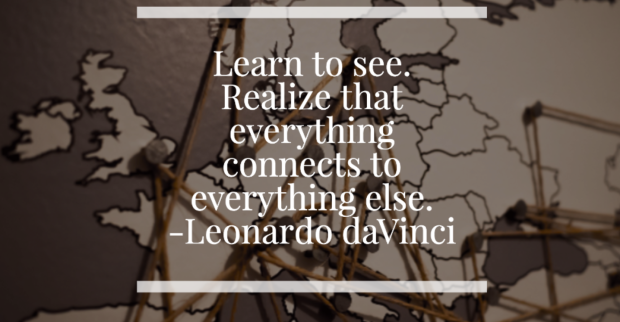Over the course of the last year, there have been numerous articles and news stories speculating on the “Learning Loss” that will result from this pandemic. I’ve noticed the fear in both parent and education groups as well; all are asking the same questions: what toll will this take on learning? What will be the learning loss? Did the last year cause lasting damage to our youth?
As I read through these white papers, articles, and posts, I see the fear. I see curriculum companies rushing to the rescue with remedial remedies, parents clamor for a summer full of tutoring, and teachers debating the best way to catch kids up in the next school year. I wonder if the fear is causing us to rush for answers responding to the wrong question?
Learning loss is a construct that only exists within the education framework focused on a scripted curriculum where learning happens in a predetermined way at a predetermined time and has standardized test goals and outcomes. It’s easy to become obsessed with the wrong outcomes without questioning if this is even the right goal. It strikes me that in most of the conversations around learning loss, the focus is finite, the short-term impact on the test score rather than the infinite, the long-term growth and learning. It seems that scarcity is the animating energy of the “Learning Loss” conversation. Students within a finite education system where the score is the desired outcome may have the appearance of learning loss because they are compared to an unmoving goal that doesn’t recognize things like personal development, the impact of trauma, or a pandemic. The rigidity of such a system of education cannot work in a world that is in a constant state of change. The Covid-19 pandemic acted as a prophet, revealing what was inherently broken in astonishing detail.
Learning loss is not a concept within a framework where the learner is at the center of a living curriculum. Learning loss can only exist in a system that never started with the learner at the center to begin with. Within a living curriculum, the learning meets students where they are. Learning is a process, not an event. Abundance is the animating energy of a living curriculum. It is always asking, inviting, growing, and adapting to the changing world and the changing learner. A living curriculum ensures that we are meeting students in this movement of time. It puts the learner in the place of being an active participant in learning and not a passive consumer. It tells students that they matter, that all of what they are experiencing in their lives can be part of their learning experience. If we are to prepare children for life outside the classroom fully, their education has to be more living, a moving river rather than a stagnant pool. Every day is a brand new opportunity to meet the student where they are.
So, back to the beginning, are we asking the right questions? Let’s take a closer look at the assumptions inherent in the “learning loss” conversation:
- Assumption 1: learning equates to how much of the curriculum we were able to get through this year compared to previous years.
- Assumption 2: seat time and passing tests are accurate measures of learning.
- Assumption 3: Correct responses reveal learning gain, and incorrect responses indicate a learning loss.
- Assumption 4: what has been lost will show up on a test when comparing it to aggregate data of previous years.
As education researcher Alfie Kohn points out, “But as numerous analyses have shown, standardized tests are not just imperfect indicators; they measure what matters least about teaching and learning.”
We know that coverage of curriculum does not equate to learning. Test scores are not proof of learning; as friend and author George Couros states, “If you can write in a report card that a student can do something in October that they can’t do in January, is that report card still relevant?”
I worry that too many schools won’t know the individual child well enough even to begin to identify and address “learning loss.” Aggregate data comparisons to previous years can’t possibly tell the story of who a child is and what they need today.
At Anastasis, we’ve worked hard to ensure that every child is the center of a living curriculum, and their growth forward is the goal. We meet them wherever they are and keep them moving forward, not just this year, every year. Knowing each child well means that we can take advantage of the untestable, newly learned skills that were also part of this year. The adaptability, resilience, problem-solving, new modes of communication, scheduling, and technology skills can become part of their forward momentum and growth. The learning journey at Anastasis continues as one of abundance.
“The principle goal of education in the schools should be creating men and women who are capable of doing new things, not simply repeating what other generations have done.” -Jean Piaget
Cross Posted at http://anastasisacademy.com
